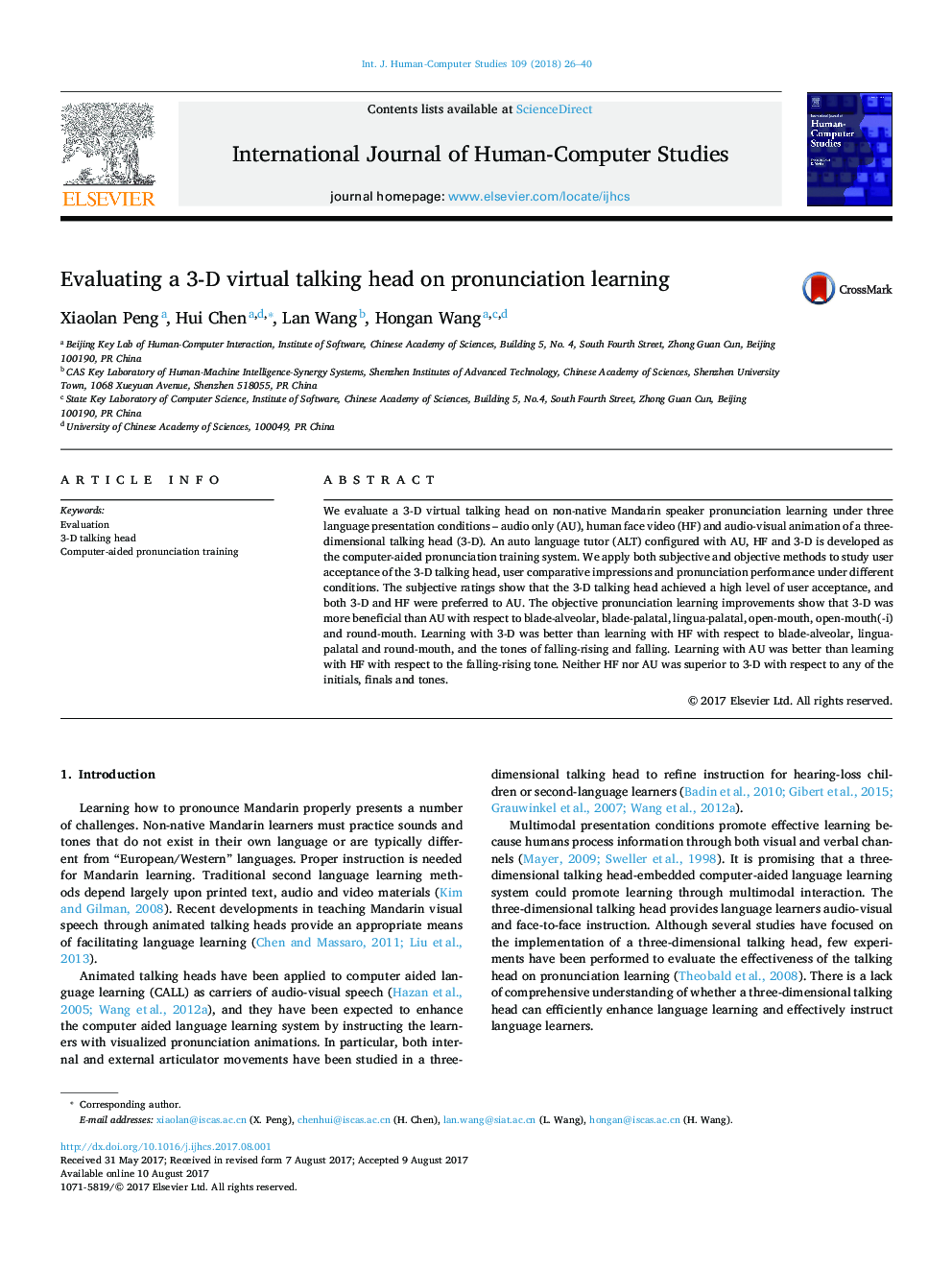| کد مقاله | کد نشریه | سال انتشار | مقاله انگلیسی | نسخه تمام متن |
|---|---|---|---|---|
| 4945740 | 1438945 | 2018 | 15 صفحه PDF | دانلود رایگان |
- The appearance and articulatory movements of 3-D are highly acceptable.
- 3-D and HF are preferred to AU concerning interest, functionality and future use.
- 3-D is more helpful than AU concerning half of the Mandarin initials and finals.
- 3-D is more helpful than HF concerning several Mandarin initials, finals and tones.
We evaluate a 3-D virtual talking head on non-native Mandarin speaker pronunciation learning under three language presentation conditions - audio only (AU), human face video (HF) and audio-visual animation of a three-dimensional talking head (3-D). An auto language tutor (ALT) configured with AU, HF and 3-D is developed as the computer-aided pronunciation training system. We apply both subjective and objective methods to study user acceptance of the 3-D talking head, user comparative impressions and pronunciation performance under different conditions. The subjective ratings show that the 3-D talking head achieved a high level of user acceptance, and both 3-D and HF were preferred to AU. The objective pronunciation learning improvements show that 3-D was more beneficial than AU with respect to blade-alveolar, blade-palatal, lingua-palatal, open-mouth, open-mouth(-i) and round-mouth. Learning with 3-D was better than learning with HF with respect to blade-alveolar, lingua-palatal and round-mouth, and the tones of falling-rising and falling. Learning with AU was better than learning with HF with respect to the falling-rising tone. Neither HF nor AU was superior to 3-D with respect to any of the initials, finals and tones.
Journal: International Journal of Human-Computer Studies - Volume 109, January 2018, Pages 26-40
